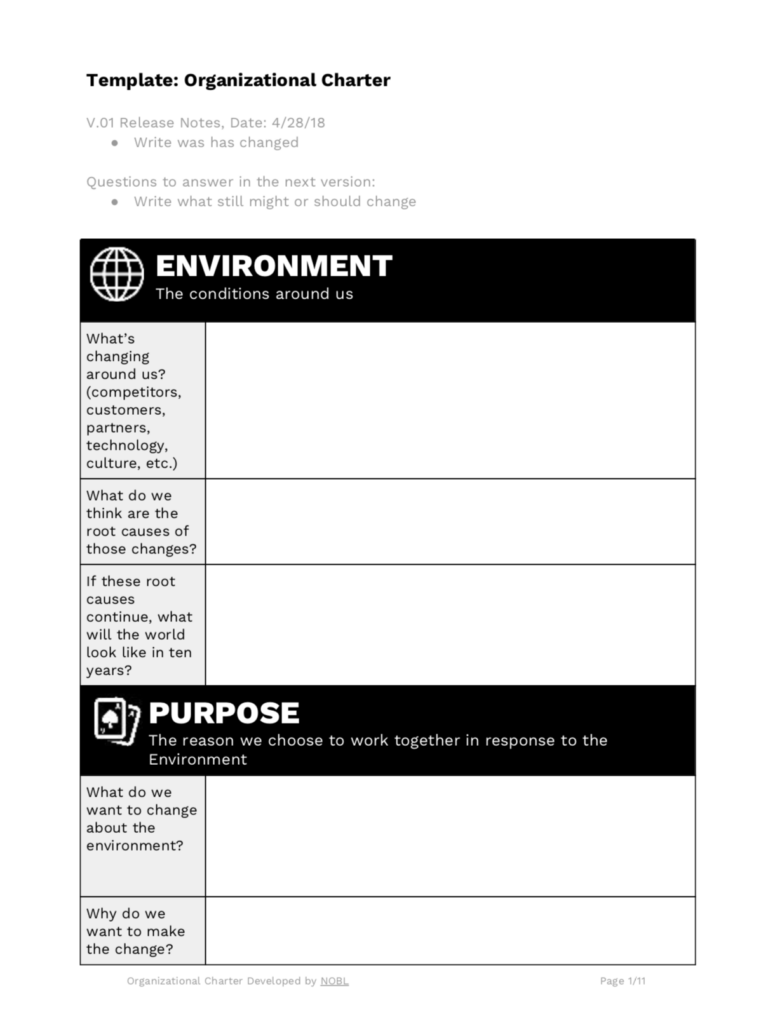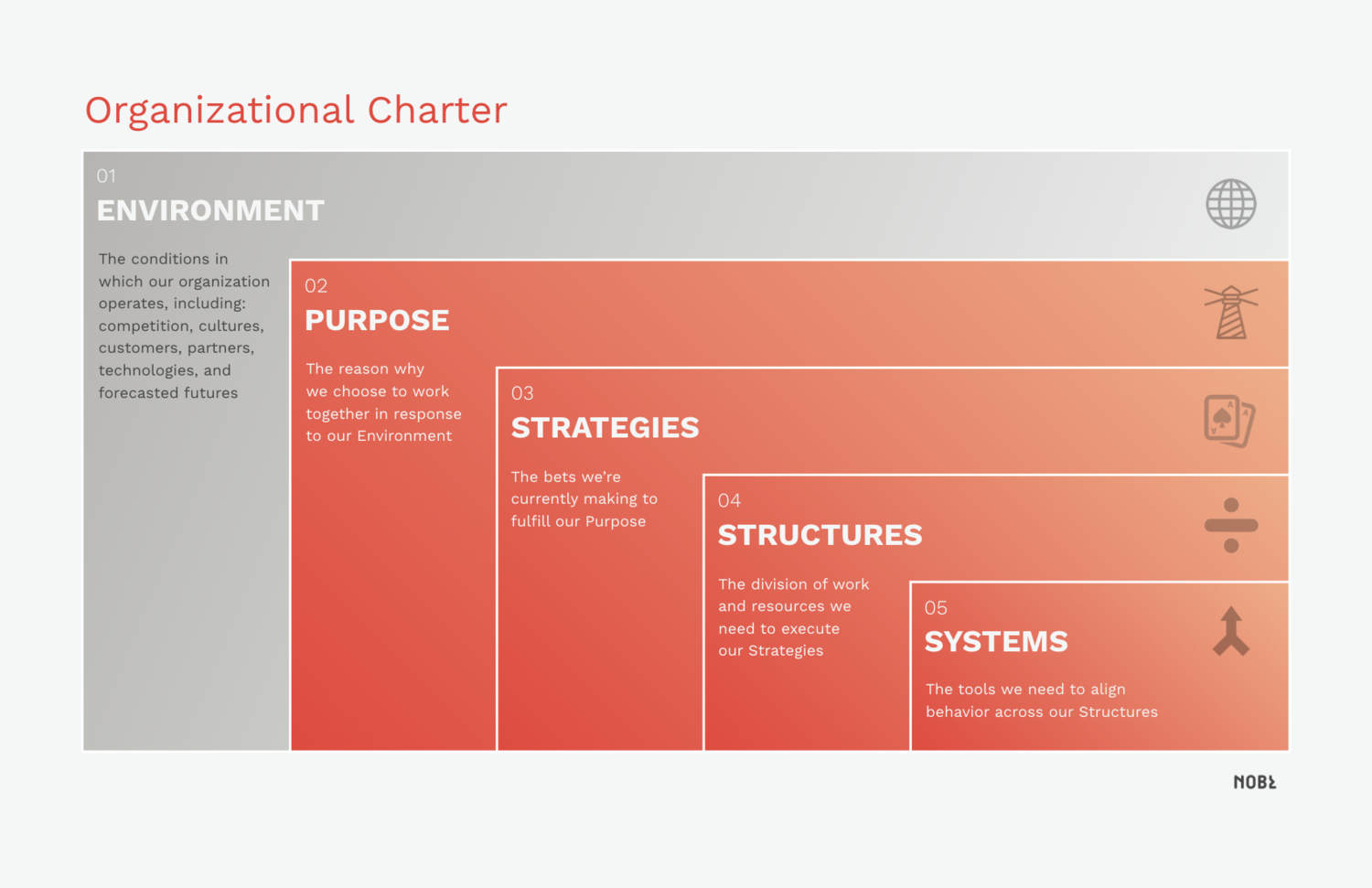This week we’re sharing one of our most powerful tools: The Organizational Charter. The Charter does two things:
- It helps us as partners to understand the organization and chart its changes over time
- It gives employees a single document that describes their organization and its ambitions
The Organizational Charter is invaluable to our work and now you can use it, too.

Background & Overview
How do you describe an organization?
When we started NOBL in 2014, we struggled to give order to the mess that is an organization. After all, business is the commercialization of human interaction and well, people are messes of complexity. We succeeded in helping clients enact change, but helping them hold the organization together as an intelligible mental model during and after the change was taxing, if not maddening.
It’s no surprise then, given the challenge, that clients tend to rely on org charts to make sense of their organizations. But org charts don’t communicate purpose. And org charts should be strategic, but strategy is nowhere to be found on an org chart. Moreover, org charts don’t tell teams how to work together. As org charts have proliferated as the de facto tool for organizational design, they’ve also had the unintended effect of training managers to think first in reporting lines or headcount and not purpose and strategies.
Over the last year, we’ve struck upon a better solution. We call it The Organizational Charter.
Our Charter encompasses five domains: Environment, Purpose, Strategies, Structures, and Systems:
- Environment is defined as the conditions in which our organization operates.
- Purpose is the reason why we choose to work together indefinitely in response to our Environment.
- Strategies are the bets we’re currently making to fulfill our Purpose.
- Structures are the division of work and resources we need to execute our Strategies.
- Lastly, Systems are the tools we need to align behavior across our Structures.
These domains sit like Russian nesting dolls: Purpose follows Environment. Strategies follow Purpose. Structures follow Strategies. Systems follow Structures. Therefore, a change within a higher domain should trigger changes to the domains below it. Too often, teams start at the Structure level, and hold a reorg with the hopes they’ll be more effective. But if you haven’t addressed the Strategy motivating the reorg in the first place, your team will continue to struggle. And in today’s dynamic environment, the organizations that can sense change better and make internal changes faster outperform their rivals.
When to Use the Charter
- Is the vision for the organization stuck in one or two founders’ heads?
- Is the organization growing rapidly and getting complicated?
- Are new hires hungry to get up to speed?
- Do you need to align as a leadership team on who you are and what you’re doing?
How to Use the Charter
- Gather your team together for an initial 90-minute session–it could be just your fellow founders, your leaders, your board, whoever you feel has key insights into the organization and who you need to bring along on the journey of defining it
- Start with our template, which includes our answers as NOBL to inspire you.
- Consider how you might settle a disagreement or make a tough decision–our advice on your first go with the Charter is to not try to reach consensus on every element, instead capture where there might be misalignment and revisit in a later session once everyone has had time to think it over and possibly talk it out with others
- Begin with describing your environment (the conditions around you): what are the trends, technologies, and opportunities that define your venture?
- Move on to your purpose (why you choose to work together in this environment): there are lots of ways to define an organization’s purpose (as many as there are branding agencies in the world) but all of them share some common questions you can answer together
- Next, describe your strategies: the choices and tradeoffs that you’re willing to make to fulfill your strategies
- After that, describe your current organizational structures (how you divide work and resources): specifically define who they serve and how you’ll measure them
- Lastly, describe your systems (the things that shape behavior across your structures)
- Complete a rough first-draft and schedule a follow-up session to reach consensus and to discuss how you want to share it with others in the company
- Come back to your Charter every 4-6 months and challenge and improve it; it’ll never be perfect or complete














